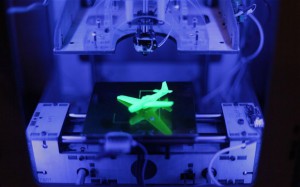 Alcoa moves is going to adopt 3D printing to manufacture parts for jet engines and other products, the aluminum maker’s chief technology officer said on Tuesday, underscoring the importance of the emerging technology and the company’s desire to cut production costs.“You are going to see it have a big impact in industry,” Ray Kilmer, Alcoa’s technology chief, said at the company’s annual investor day presentation in New York.
Alcoa moves is going to adopt 3D printing to manufacture parts for jet engines and other products, the aluminum maker’s chief technology officer said on Tuesday, underscoring the importance of the emerging technology and the company’s desire to cut production costs.“You are going to see it have a big impact in industry,” Ray Kilmer, Alcoa’s technology chief, said at the company’s annual investor day presentation in New York.
Three-D printing promises to cut product development costs by 25 percent, cut in half the time it takes to make parts for customers and enable rapid redesign of complex products that was not possible before, Kilmer said. The technology uses three-dimensional printing machines and related products in a process called additive manufacturing, which can deposit thin layers of metal, plastic and Ceramics atop one another, using a digital blueprint to produce a precise component or product. Such machines resemble ink-jet printers in homes and offices but are larger and more robust. The company has a team at the Alcoa Technology Center in Upper Burrell and at other locations working on 3-D printing production.
Technology is “a gigantic advantage that powers every one of our businesses,” CEO Klaus Kleinfeld said at the investor day. Aerospace, automotive and consumer electronics components are its biggest businesses. Kilmer said the company’s strategy is focused on the “relentless pursuit of taking costs out” of production. Gains from productivity improvements totaled $862 million through the third quarter and are expected to reach $1.1 billion for the full year, exceeding the $850 million target for 2014, the company said.
Using a jet engine fan blade as an example, Kilmer said Alcoa’s research shows production time from design to finished product could be reduced from a year to 25 weeks. A large part of that reduction is the ability to virtually model via computer the casting process for each part instead of the traditional methods of making dies. “More research is needed, but we will be able to print some of these parts directly (instead of casting),” he said. Product development costs could be 25 percent lower and enable the ability to quickly design new iterations of complex products that is not possible with traditional forging technology, he said. Kilmer was not available for additional comment.
Alcoa’s development work is done in house, and it is looking at acquisitions, Kilmer said. “We have a large focus group looking at 3-D printing” for use in multiple applications, he said.



